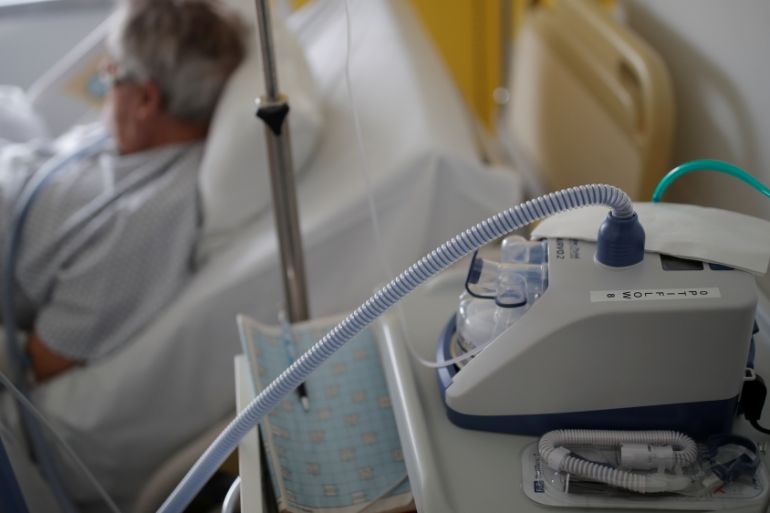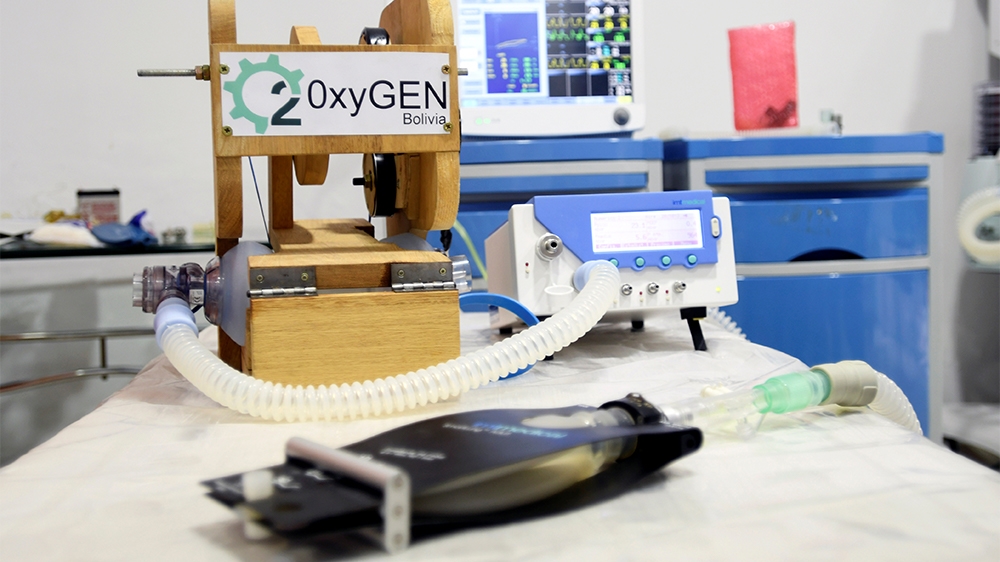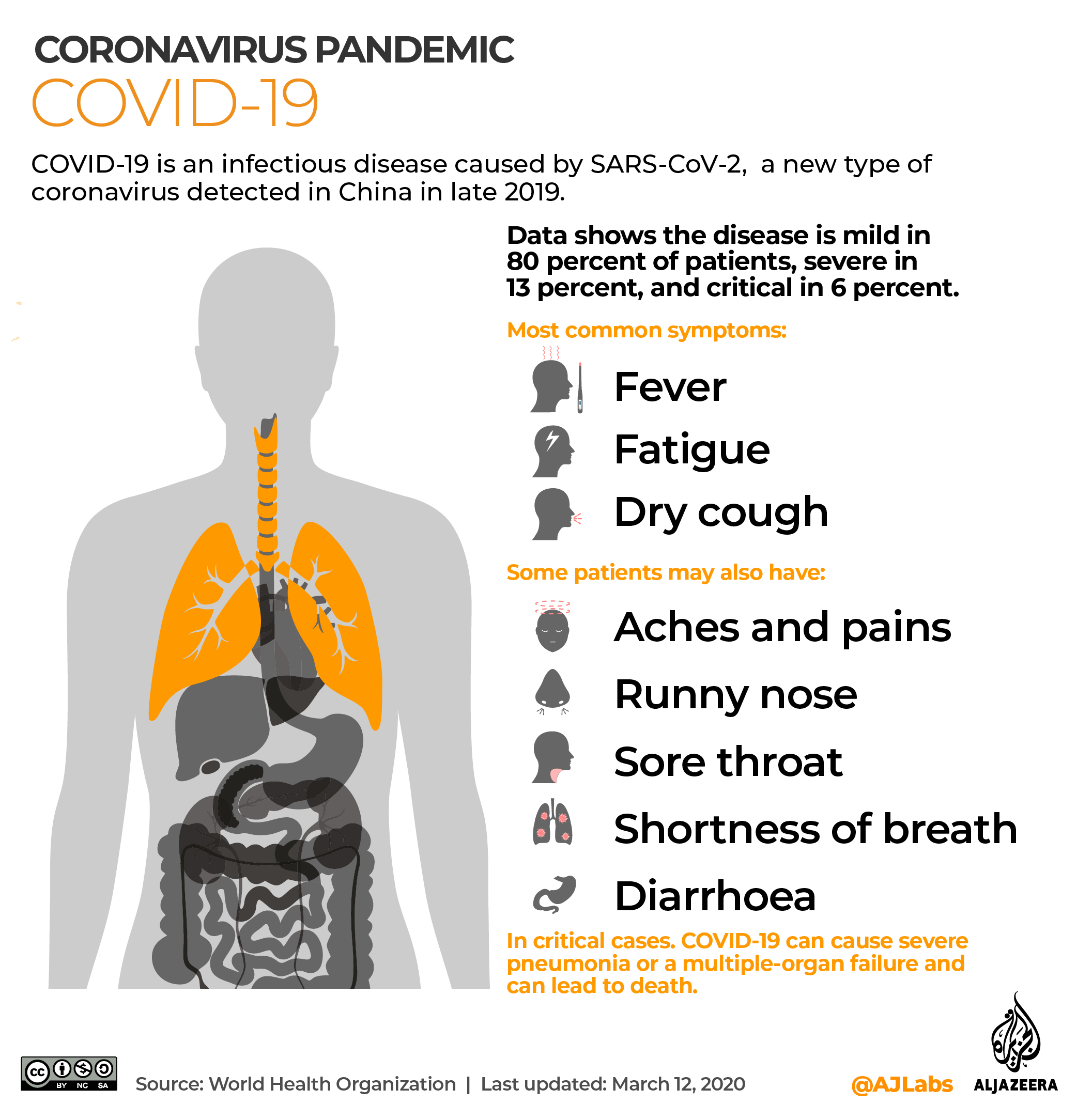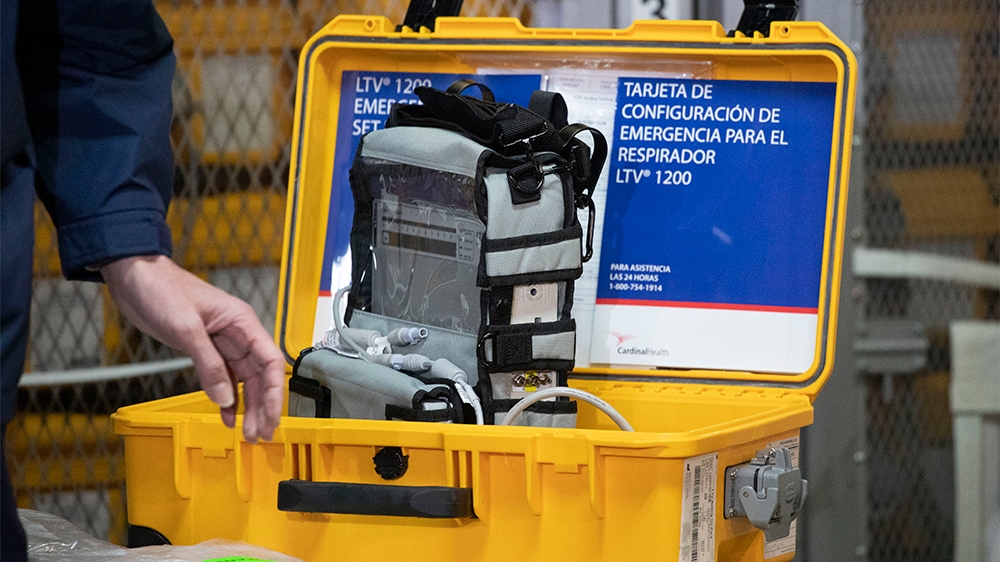Ventilators explained: Key device in fight against coronavirus
One in six COVID-19 patients can develop breathing difficulties, potentially needing access to a ventilator.

One of the biggest challenges faced by health workers around the world amid the coronavirus pandemic is trying to save lives when the number of patients needing critical care overtakes the available medical infrastructure.
Countries with a large number of cases are struggling to meet the demand for supplies and equipment needed to arm those on the front lines against COVID-19, the highly infectious respiratory disease caused by the virus.
Keep reading
list of 3 itemsHow does coronavirus spread and how can you protect yourself?
Coronavirus: Which countries have confirmed cases?
Ventilators – mechanical breathing devices – are crucial in the fight to save patients whose lungs are assailed by the virus.

According to the World Health Organization, one in six COVID-19 patients becomes seriously ill and can develop breathing difficulties.
In the United States, which has more confirmed cases than any other country in the world, the Society of Critical Care Medicine has projected that 960,000 coronavirus patients may need to be put on ventilators at one point or another during the pandemic.
But the US has only about 200,000 machines, by the organisation’s estimate, approximately half of which are older models that may not be ideal for the most critically ill patients.
|
|
In addition, many ventilators are already in use, supporting other patients with severe, non-coronavirus ailments.
The United Kingdom’s National Health System is reported to have just 8,175 ventilators. The government believes up to 30,000 could be needed at the peak of the pandemic.
The situation is especially critical in countries with weak healthcare systems. For example, in the West African country of Mali, home to some 19 million people, there are 56 ventilators.
The Africa Centres for Disease Control and Prevention, meanwhile, said this week that countries in the continent were looking to engage with wealthier countries to secure key supplies, including ventilators, if the situation deteriorates.

How does a ventilator work?
In the most severe cases, the coronavirus damages healthy tissue in the lungs, making it hard for them to deliver oxygen to the blood.
Pneumonia can develop, along with a more severe and potentially deadly condition called acute respiratory distress syndrome, which can damage other organs.
To prevent this, mechanical ventilators feed oxygen into the lungs of patients with severe respiratory problems through a tube inserted down the throat.
The ventilator also has a humidifier, which adds heat and moisture to the air to match the patient’s body temperature.
Patients with milder symptoms may be put on non-invasive ventilation, using face masks, nasal masks or mouthpieces which allow pressurised air or mixtures of gases to be pushed into the lungs.
Additionally, hoods with pressurised oxygen pumped in them via a valve are also commonly used.

What is being done to meet the demand?
Ventilator makers are under pressure to sharply increase production even as the pandemic has disrupted the transport and supply of crucial parts, such as hoses, valves, motors and electronics – some of which come from China, the original epicentre of the outbreak.
As companies struggle to meet the rising demand, governments have sought the help of the military, enlisted other manufacturers and even looked to 3D printing in the hopes of boosting production.
One of the world’s largest makers of ventilators, Swiss-based Hamilton Medical AG, aims to raise production numbers to about 21,000 ventilators this year, up from 15,000 last year, by deploying marketing staff on the production line, among other measures.
Italy’s Bologna-based company, Siare Engineering International Group srl, has 25 army technicians helping assemble machines as it aims to more than triple monthly production.
Meanwhile, a team of doctors in Italy has developed a way to provide oxygen to two people from one ventilator, therefore doubling capacity, according to the Italian region of Emilia Romagna’s commissioner for coronavirus.